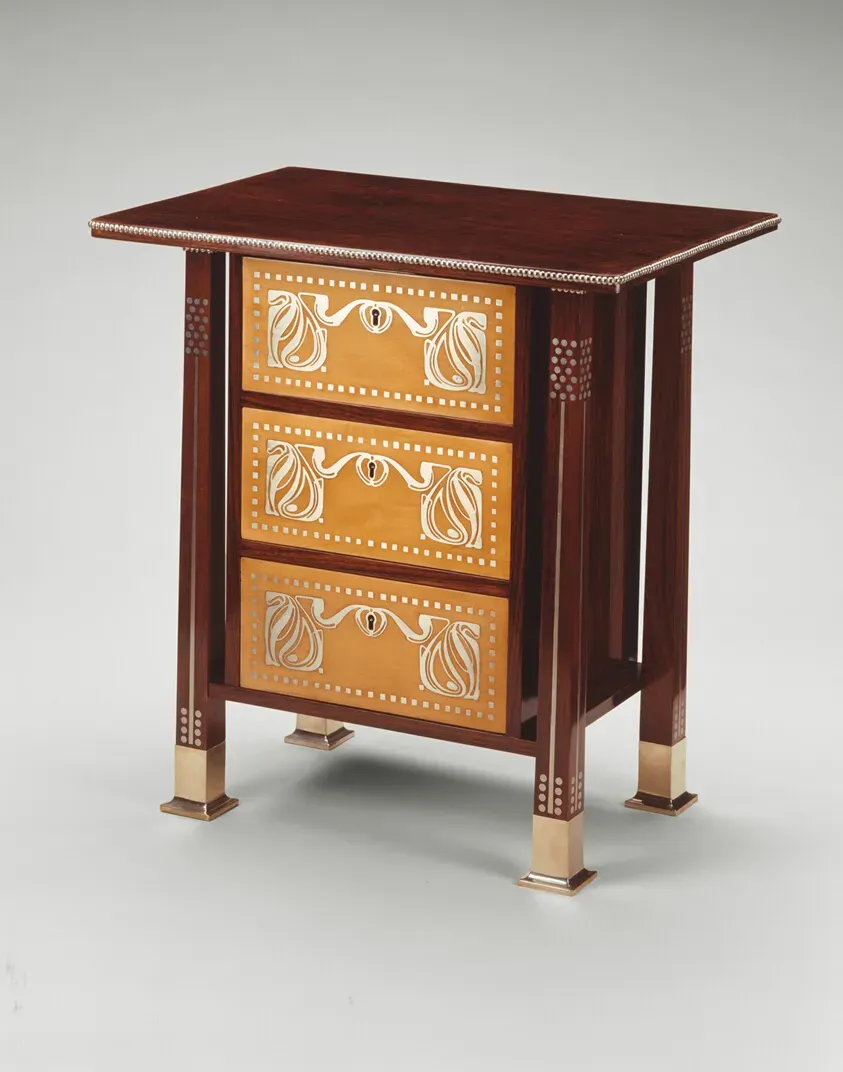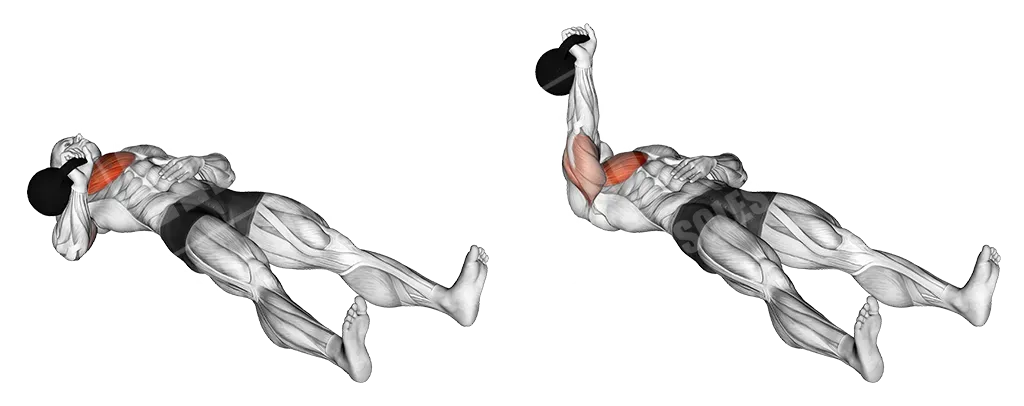Table of Contents
Thinking about building a stronger, more defined chest? You've probably spent time with barbells or dumbbells on a bench. Those are solid tools, no doubt. But maybe you're looking for something different, a way to challenge your muscles in a slightly new path. That's where the kettlebell chest press comes into the picture.
Understanding the Kettlebell Chest Press

Understanding the Kettlebell Chest Press
It's Not Just a Fancy Dumbbell
When you first see someone doing a kettlebell chest press, your brain might just register "oh, press-up with weights." But hang on a second. Understanding the Kettlebell Chest Press means recognizing it's a different beast than its dumbbell cousin. The weight isn't evenly distributed like a dumbbell; it sits off-center, below your hand. This seemingly small difference changes everything. It forces your stabilizing muscles, especially those around your shoulders and core, to work overtime just to keep the weight from wobbling all over the place. You can't just flop the weight around; you need control from the start of the movement, lowering it slowly and deliberately, to the powerful push back up.
Imagine trying to balance a bowling ball versus a brick of the same weight. The bowling ball, with its weight distributed differently, feels different, right? That's a simplified way to think about the kettlebell versus a dumbbell. This exercise isn't just about moving weight from point A to point B; it's about managing an unstable load, which translates to building functional strength and better body control.
Why Bother with Kettlebells for Your Chest?
So, why go through the extra effort? Beyond understanding the kettlebell chest press muscles worked (which we'll get to), there's a real benefit in how this exercise recruits muscles. Because of that off-center weight, your body has to stabilize more, engaging muscles you might not hit as hard with a standard bench press. This means more work for your serratus anterior, the muscle that helps protract and rotate your scapula, crucial for shoulder health and overall pressing strength. Your core also gets more involved, fighting rotation and keeping your body stable on the bench or floor.
Plus, for many people, the kettlebell grip can feel more natural or comfortable than a dumbbell grip, especially if you have wrist issues. It allows for a bit more freedom in wrist rotation during the movement. It's a tool that adds variety to your training, challenges your stability, and can help identify and iron out imbalances you might not notice with bilateral (two-sided) movements like a barbell press.
Key Differences: Kettlebell vs. Dumbbell Press
- Weight Distribution: Off-center in kettlebell, even in dumbbell.
- Stability Requirement: Higher for kettlebell due to off-center weight.
- Muscle Engagement: More stabilizer and core work with kettlebells.
- Grip Feel: Can offer more natural wrist movement for some with kettlebells.
Breaking Down the Kettlebell Chest Press Muscles Worked

Breaking Down the Kettlebell Chest Press Muscles Worked
The Big Movers: Pectorals, Triceps, and Deltoids
Alright, let's talk about the heavy hitters, the muscles that really drive the movement when you're doing the kettlebell chest press. First up, obviously, are your pecs – the pectoralis major and minor. These are your primary chest muscles, responsible for pushing the weight away from your body. Think of them as the engine of the press. They contract hard to extend your arm and bring your upper arm across your body. You'll feel a solid squeeze in your chest if you're doing it right.
Right alongside the pecs are your triceps brachii, the muscles on the back of your upper arm. As you extend your elbows to press the kettlebells up, your triceps are working hard to straighten your arm. They're the essential secondary pushers in this movement. And don't forget the front part of your shoulder, the anterior deltoid. This muscle assists the pecs in lifting the weight forward and upward. So, when we talk about kettlebell chest press muscles worked, these three groups – pecs, triceps, and anterior deltoids – are doing the bulk of the work.
The Unsung Heroes: Stabilizers and Supporting Cast
While the big muscles are doing the pushing, a whole crew of smaller, but equally important, muscles are working behind the scenes. Because the kettlebell is inherently less stable than a dumbbell, these stabilizers get a serious workout. Your serratus anterior, located along the side of your rib cage, is crucial for protracting your scapula (moving your shoulder blade forward) at the top of the press, which helps protect your shoulder joint and allows for a full range of motion. If your serratus is weak, the top part of your press might feel shaky or incomplete.
Your rotator cuff muscles (supraspinatus, infraspinatus, teres minor, and subscapularis) are also constantly engaged, working to keep your shoulder joint stable as you control the movement. And let's not forget your core – your abs, obliques, and lower back muscles. They have to stay tight to keep your body rigid on the bench or floor, preventing any unwanted arching or twisting. This integrated work is a key benefit of the kettlebell chest press muscles worked; it's not just an isolation exercise for the chest.
Key Muscles Involved in the Kettlebell Chest Press
- Pectoralis Major (Chest) - Primary Pusher
- Pectoralis Minor (Upper Chest/Shoulder Stability) - Assists
- Triceps Brachii (Back of Upper Arm) - Elbow Extension
- Anterior Deltoid (Front of Shoulder) - Assists Push
- Serratus Anterior (Side of Rib Cage) - Scapular Stability/Protraction
- Rotator Cuff (Shoulder) - Joint Stabilization
- Core Muscles (Abs, Obliques, Lower Back) - Body Stability
Perfecting Your Kettlebell Chest Press Technique

Perfecting Your Kettlebell Chest Press Technique
Grip It and Get Set Up Right
so you've got the kettlebells. Don't just grab 'em like dumbbells. Perfecting your kettlebell chest press technique starts with the grip and the setup. You want the handle running diagonally across your palm, from the base of your index finger down towards your pinky. The bell itself should rest on the back of your forearm, close to your wrist. This isn't comfortable at first for some people, but it's the "racked" position that keeps the weight stable. If the bell is flopping away from your arm, you've got it wrong. Lie back on your bench or the floor, bringing the kettlebells up to your chest. Keep your feet flat on the floor, creating a stable base. Don't let your lower back arch excessively; maintain a slight natural curve, but keep your core braced. Think about screwing your shoulders down into the bench; this helps engage your lats and provides more stability for the press.
Control the Descent, Don't Just Drop
Once you're set, the lowering phase is critical for perfecting your kettlebell chest press technique and truly engaging the kettlebell chest press muscles worked. This isn't a race to the bottom. Slowly lower the kettlebells towards the sides of your chest. Keep your elbows at roughly a 45-degree angle relative to your torso. Don't let them flare straight out like airplane wings – that's a fast track to shoulder trouble. As the bells come down, maintain that racked position on your forearms. You should feel tension building in your chest and shoulders. Stop when your upper arms are roughly parallel to the floor, or when you feel a good stretch in your chest without compromising shoulder position. Rushing this part means you're losing out on valuable time under tension for those pecs and stabilizers.
- Grip: Diagonal across palm, bell resting on forearm.
- Setup: Feet flat, core braced, shoulders screwed down.
- Descent: Slow and controlled, elbows at 45 degrees.
- Bottom Position: Upper arms parallel to floor or comfortable stretch.
Drive Up and Finish Strong
Now for the press. Exhale as you powerfully drive the kettlebells straight up towards the ceiling. Focus on squeezing your chest muscles as you extend your arms. At the top, don't just stop; think about actively pushing your shoulders slightly forward, protracting your scapulae. This is where the serratus anterior, one of those key kettlebell chest press muscles worked, gets its moment. It helps provide stability and a full range of motion at the peak of the press. Avoid letting the bells crash together at the top; maintain control. Lower the bells back down with the same controlled tempo you used on the way down. Each rep should be deliberate, focusing on muscle engagement rather than just moving the weight. It's about quality over quantity here.
Getting More from Your Kettlebell Chest Press Routine

Getting More from Your Kettlebell Chest Press Routine
so you've got the basics down for the kettlebell chest press. You understand which kettlebell chest press muscles worked – the pecs, triceps, deltoids, and all those crucial stabilizers. But how do you take this from "just another exercise" to something that really drives progress? It's not rocket science, but it does require a bit more thought than just pumping reps. You can start playing with tempo, for instance. Lowering the weight slowly (say, a 3-second count) increases time under tension, absolutely torching those muscle fibers. Or, try pausing at the bottom for a second – that eliminates any momentum and forces your muscles to work harder from a dead stop. Another simple tweak is adjusting your grip width slightly or even trying a single-arm press, which introduces a whole new level of core and anti-rotation work you just don't get with two bells.
Wrapping Up the Kettlebell Chest Press
So, we've broken down the kettlebell chest press muscles worked: your pectorals doing the heavy lifting, the deltoids assisting, and a whole crew of stabilizers like your triceps and core working overtime. It's clear this isn't just a carbon copy of the dumbbell press; the kettlebell's nature demands a different kind of engagement. Understanding these muscle actions helps you execute the movement with more intent, focusing on proper form rather than just moving weight. Adding kettlebells to your routine offers a fresh angle for chest development, challenging your stability and coordination alongside pure strength. Give it a try if you haven't already, and feel the difference.